Museo Larco in Lima is one of my favorite museums we’ve visited. The private collection of pottery and pre-colombian artifacts are INcredible. Not only is the exhibit thorough, with artifacts from many of the civilizations of Peru (and there were thousands of pre-Inca years) ranging from pottery, to mummies, to sacrificial tools and jewelry, the pottery archives and the thousands of pieces not on exhibit, are open to the public.
This open archive sets the museum apart from most others, as does their second exhibition room: erotic pottery of Peru. Yup, you read that right, erotic pottery, made all the more exotic because they’re what remained after the Spanish and their shame destroyed so many of these types of artifacts.
Shall we get straight into it?
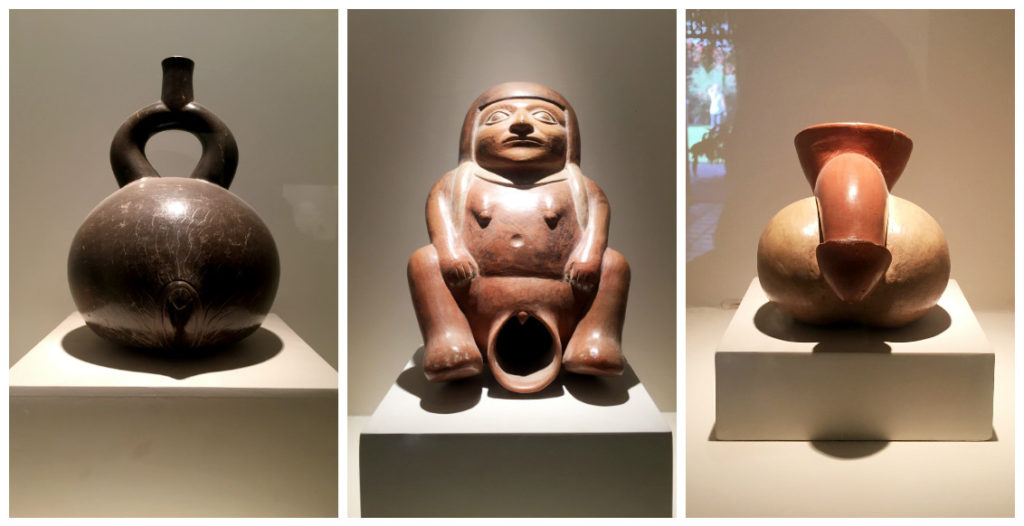
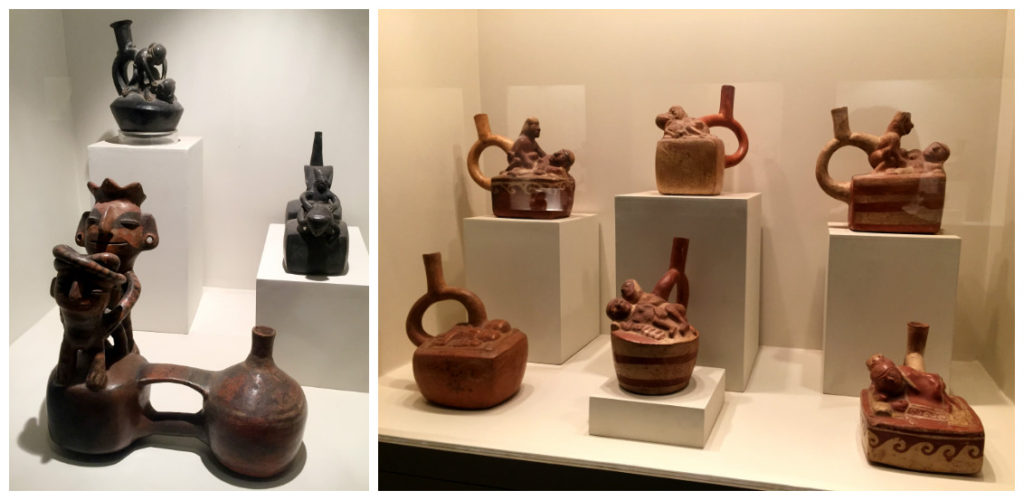
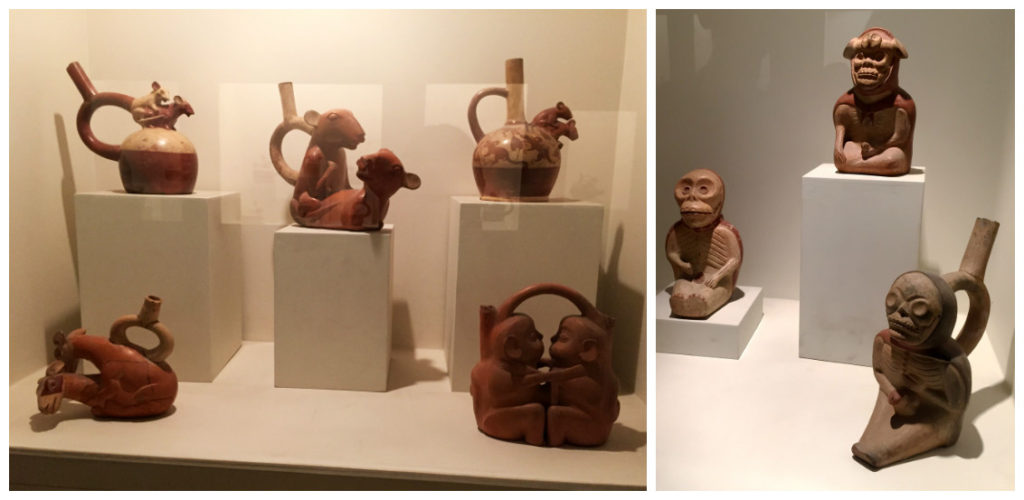
Museo Larco is a private museum, founded by archeologist and collector Rafael Larco Hoyle in 1926. In his book Checán on the sexual representations of ancient Peru, he wrote, “As I reach the end of this book on an aspect of Peru’s archeological legacy for which as a point of reference all we have are erotic vessels, I leave my readers to draw their own conclusions.”
I too, will let you take from these photos what you want.
But as I mentioned, these erotic pots, jars, and vessels aren’t the only thing this museum is known for—let’s get back to the less sexual wares across the garden in the main exhibition room.
What surprised me right off the bat was just how rich and longstanding the pre-Inca cultures were. Ignorant of Peruvian history and culture, I didn’t know that the Inca reign was just a few hundred years, and the most recent in terms of the many and diverse cultures of the Andean, Amazonian, and coastal regions.
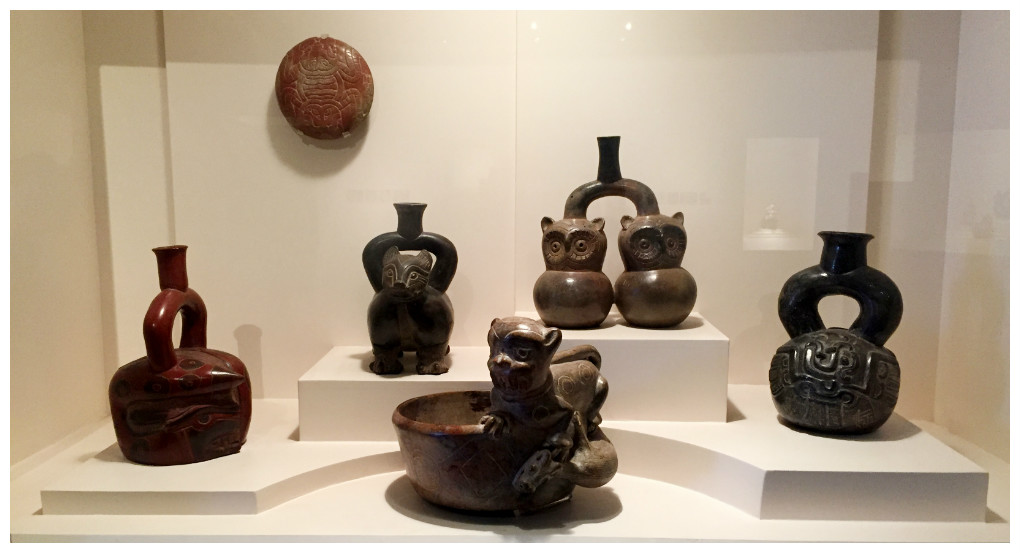
Pottery is the Larco Museum’s main storytelling device. Most of the ceramics on display were not everyday objects, but were used as ceremonial objects, as a way to spread ideas, as religious expression, and as works of art. No wonder they are so pristine and so telling!
Much of the early pottery uses animal designs, as the gods were represented as animals. Birds represent the skies (like the condor), felines represent the earth (like the puma), and serpents represent the underworld (snakessss!). These spout/handles are also representative of the time period.
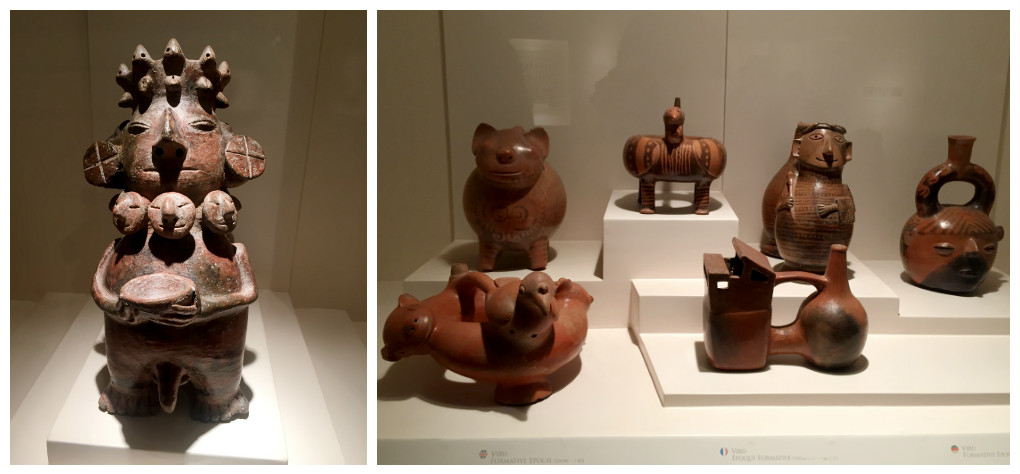

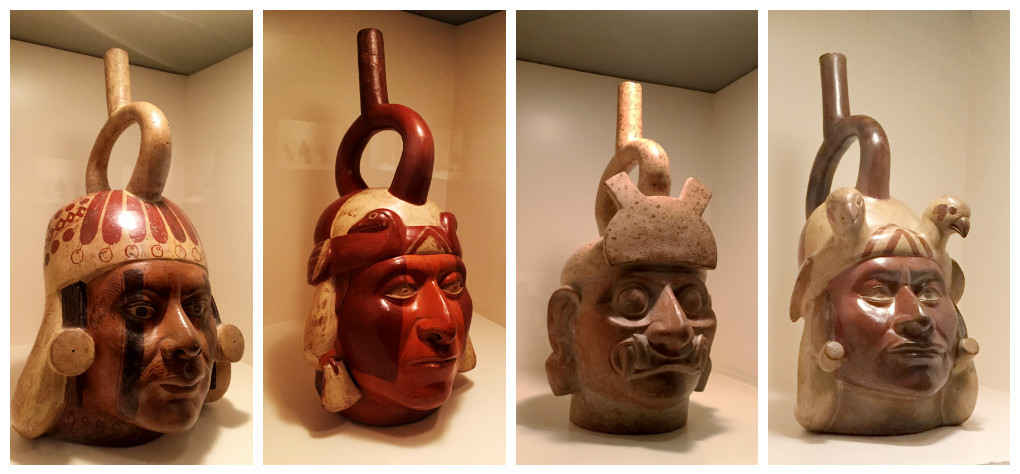
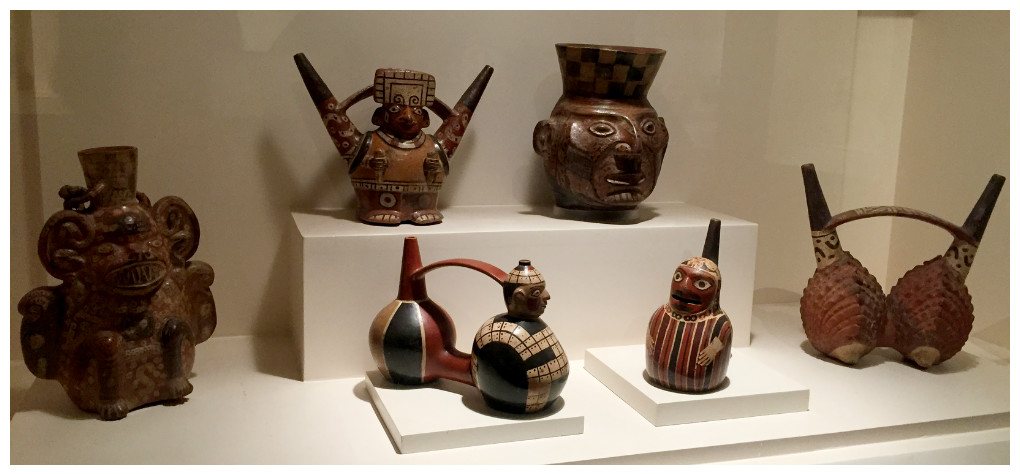
Accompanying these artifacts in the main exhibition rooms are written descriptions in at least 7 languages (English, Spanish, French, German, Italian, Japanese, Chinese, off the top of my head), the most I’ve ever seen at a single museum.
I’m not sure how long we spent looking at and admiring the pottery, but it looked like tour groups were passing us with speed. Those we started with probably went through the whole museum by the time we got through all the pottery, but this really let us appreciate the artistry in the pieces on display.
The next room had examples of the beautiful textiles and quipus, Inca knot systems used for counting and record keeping—information such as census and harvest numbers. Colors, knots, and distances between the knots carried this information.

Again, textiles were more than just clothing. Like the pottery, they were used to spread ideas, show social status, and to send messages to the afterlife when wrapping the dead. The museum compared the importance of textiles to the ancient Peruvians to the importance current civilizations place on silver and gold. Peruvian cotton is extremely high quality. They used alpaca and vicuña wool as well, as it’s impermeable to weather and is warm.
There were a few portraits of Inca, more of an homage to Spanish style than anything else.
The darkish photo to the right is Manco Capec, the founder of the Inca dynasty, painted in Cusco. Indigenous authorities were trying to maintain the rights and privileges of their nobility Carlos V granted them when later bourbon kings were trying to rescind them. The paintings description didn’t mention the outcome, but I can’t imagine they had much privilege seeing as the Spanish conquered their empire, and considered it theirs.
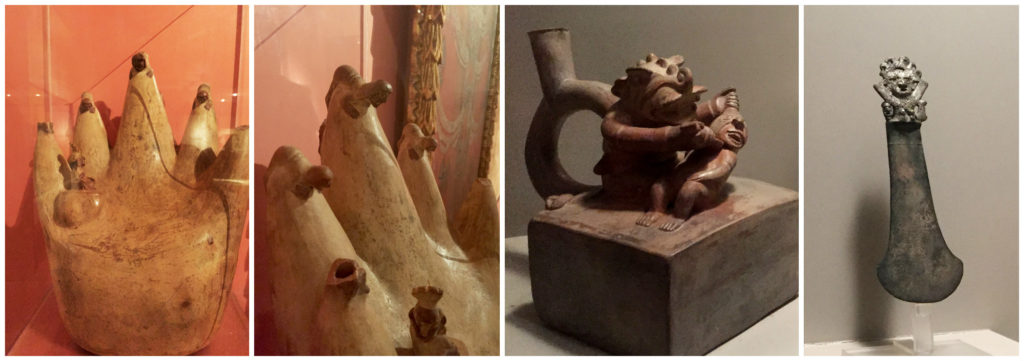
A bit more on the Inca customs with figurines demonstrating rituals. There were many examples of sacrificial knifes, called Tumi, used to cut the jugular vein in the neck of those being sacrificed.

They were excellent metalworkers, part of why the Spanish thought they had gold galore. In reality, they worked the little bit of gold or silver so well it was able to go a long way in covering surfaces or blending with other metals to maintain the glimmer and sheen. Gold represented the sun and silver the moon, this was their value, as representations of supernatural power. The metalwork dressed the ruling class. Their ability to shine as the sun and the moon (which the ordinary people did not understand) showed that they were related somehow to these celestial bodies and deserved their power.
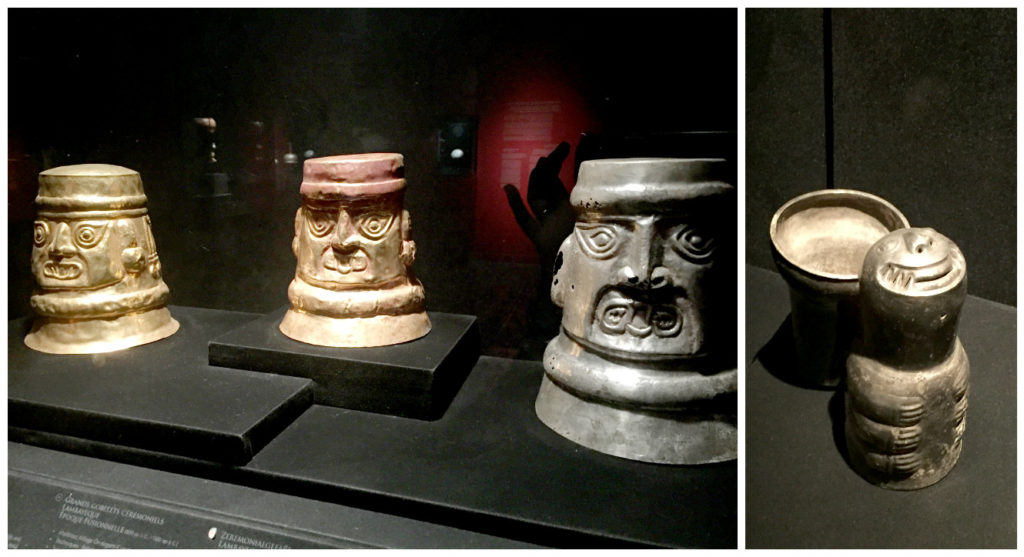
In the middle of the dark room sat a mummy, a perfectly preserved example of ancient funerary rites. Death was merely a new beginning to the people of ancient Peru. They went through elaborate death ceremonies and created objects specifically for the deceased to take with them into the afterlife.

But how about that jewelry behind the mummy?
BEAUTIFUL. And a bit extreme. There are your nice necklaces and then there are your massive ear/nose pieces.
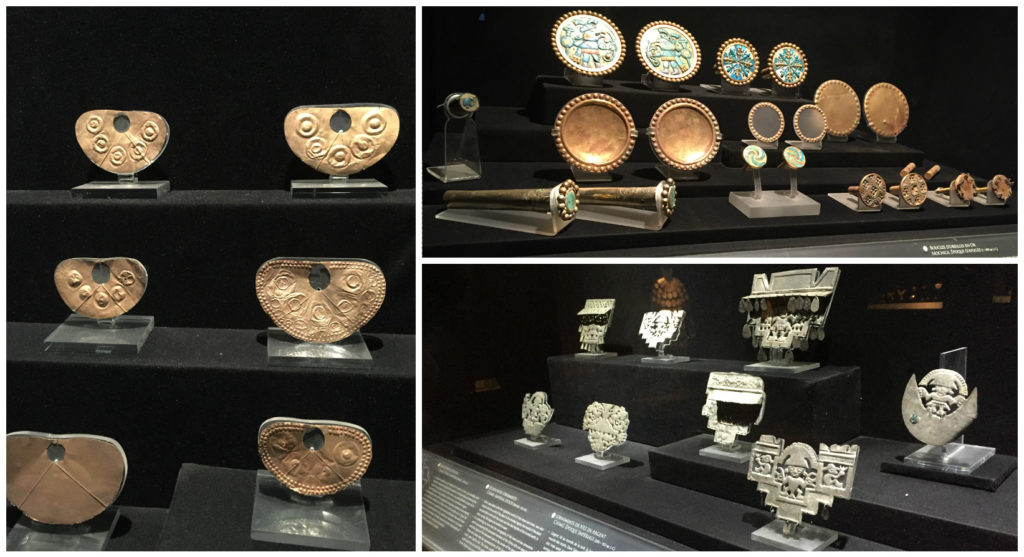
Ear adornments were one of the main ways to distinguish those in power in Andean societies. Size, quality, and design were distinguishing features indicating status. Some were so large and heavy they had to use bands wrapped around the head to hold them up.
How do those large nose pieces even work?
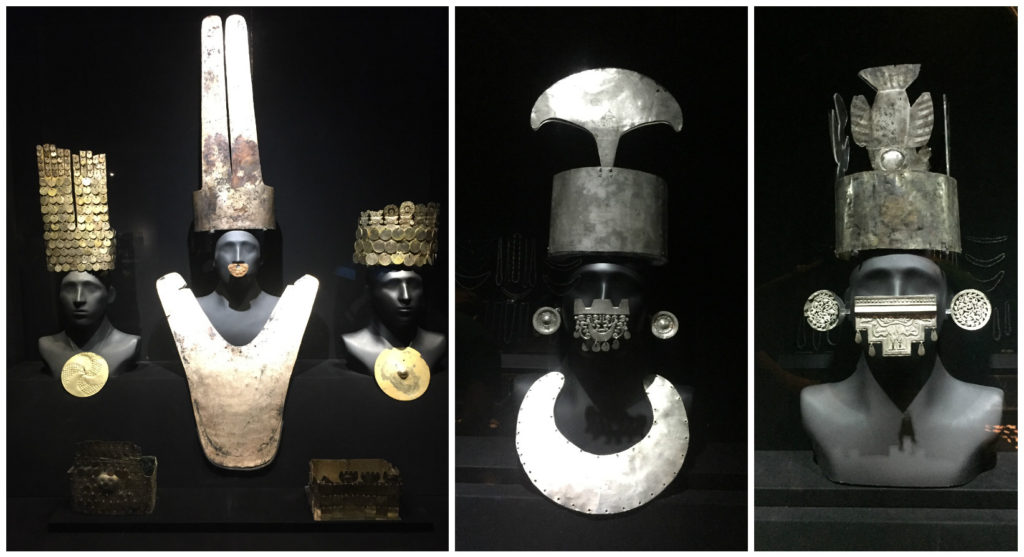
These are recreations of what they would have looked like. There are little spaces/slots allowing the wearer to see past their nose piece (in the case it’s that large).
The most epic and impressive piece was left for the very last room of course:
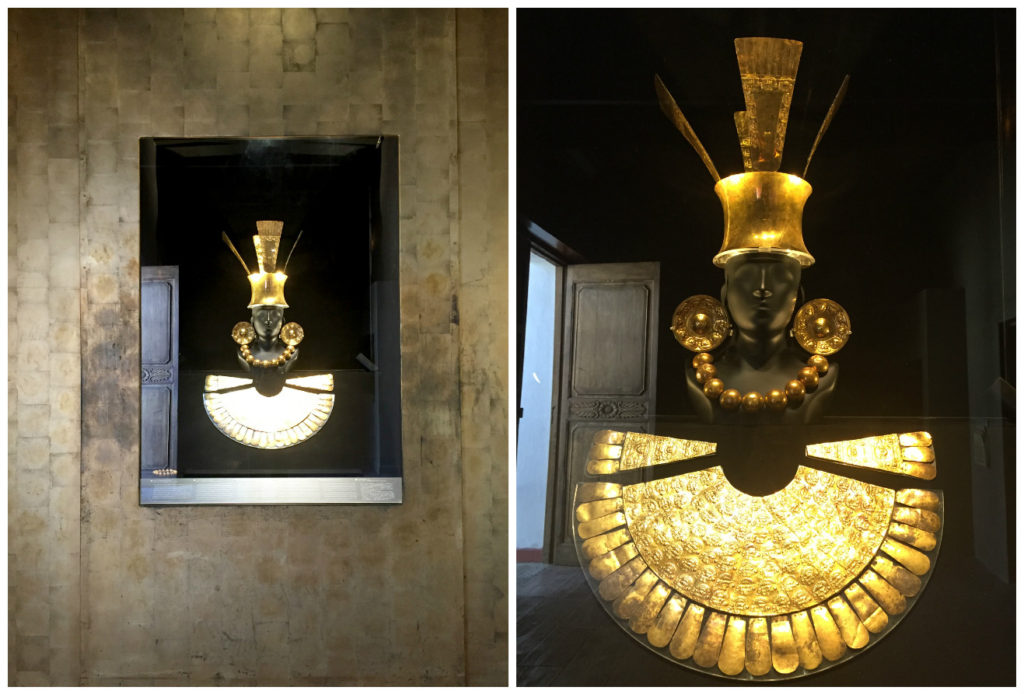
Surrounded by gold walls in the exhibit, this is the crowning set. It’s the only known complete set of gold Chimu clothing on exhibit anywhere in the world. The Chimu were the finest metalworkers of ancient Peru. The plumes in the headpiece and edge of the breastplate represent birds: the only beings able to approach the sun.

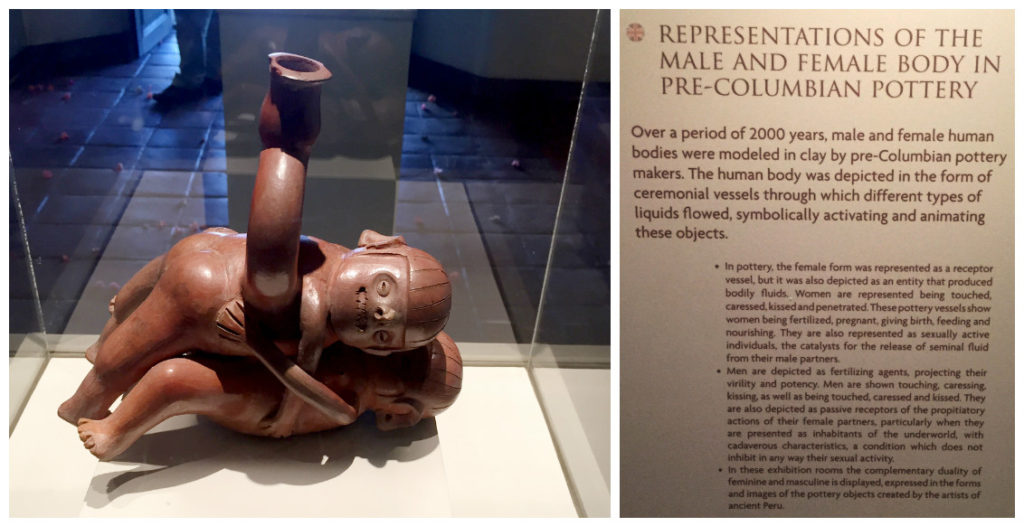
Thank you so much for the tour! So much amazing prehistory I never knew about, of Peru.